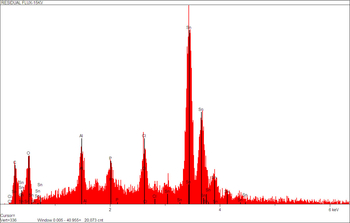SMT - BGA Ball Drop - A Concern in Lead-free Assemblies
No matter where you stand on the wisdom of the EUís leadfree directive, and the numerous followers across the globe including China, Mexico and the state of California, the impact will be felt by everyone, including the industries that are exempt. Because the August 13, 2005, deadline for WEEE implementation has come and gone, and has been moved to the end of 2005 in most European countries, it is unlikely that the July 1, 2006, RoHS deadline will be moved. Those who have manufactured lead-free products that use BGAs may have experienced problems in BGA assemblies. If you have not, you and your board and package suppliers are doing the right things ó or you are just lucky.
As we have learned in the IPC-7095 BGA committee (BGA Design and Assembly Implementation), different companies are experiencing different types of problems in BGA assembly. We discovered through our survey that many companies are facing problems with solder-mask-defined lands at the ball-BGA-package interface.
In this column, I focus on a failure condition in which the BGA ball separates from the package. This failure can be pronounced and will be easily visible after cross sectioning. In some cases, the ball almost drops. In other cases, the failure will be seen if the package is mechanically pulled and all the separation will be at the package-ball interface, and almost all the balls stay with the PCB land. The fractured surface will be flat ó indicative of brittle failure. This type of BGA ball drop has even been seen in tin/lead processes.
There are various causes of failure at the BGA ball-package interface. One well-known phenomenon has been discussed in numerous papers and in IPC-7095. As larger BGAs are being used, we see failures at the ball-package interface, and the problem is getting worse with lead-free. In many cases, the failure is related to solder-mask-defined lands on the BGA package substrates where the solder mask acts as a crack initiator where BGA balls touch the solder mask.
This issue was tackled years ago and the recommendation has been to use non-solder-mask-defined or metal-defined lands on both package and PCB lands. While most are using metal-defined lands on the PCB, most packages continue to be supplied with solder-mask-defined lands. In some cases, package suppliers have no choice but to use solder-mask-defined lands, such as when the land is too small or over a large ground plane. No one has given a good reason for widespread use of solder-mask-defined lands on the package substrate. The good news is that users are staying away from solder-mask-defined lands. In the current revision of IPC-7095, we are looking at this issue again. If you have any input, please feel free to contact me or the IPC.
The solder-mask-defined land on the BGA package is not the only cause of failure at the package-ball interface. One cause for failure is the migration of copper from the PCB to the top of the package, causing a failure at the package-ball interface. The migration of copper from the PCB land through the ball to the top of the package forms a brittle nickel/tin/copper ternary intermetallic with nickel from the ENIG (electro-less nickel immersion gold) surface finish commonly used by package suppliers. The failure is generally seen at interface between the nickel under plating on the package substrate and the ternary intermetallic formed due to copper migration
from the PCB land through the ball.
I have confirmed this failure mechanism, as have many others. Widespread presence of copper in the ball and at the package interface has been determined through EDX analysis. There is a slight amount of copper (about 0.5%) in most SAC solder balls used in lead-free, but that is not the source of the extensive presence of copper. This problem is also seen in tin/ lead processes where copper is present in the solder ball as impurity confirms the observation that copper is migrating from the PCB land through the ball. It should be no surprise to anyone that this problem will be compounded when the peak reflow temperature is raised from 220oC in tin/lead to 250oC in lead-free.
If copper is migrating from the PCB land to the top of the ball, forming ternary intermetallic with the nickel in the package substrate, how can you mitigate this problem? (Because there are other causes, we are not discussing prevention.) A thermal profile with lower peak reflow temperature and shorter time, especially shorter time above liquidus (TAL), does help. However, plating nickel over copper as a barrier layer (ENIG surface finish) is one solution.
As noted, migration of copper is not the only cause. Otherwise the failure would be much more widespread because not everyone sees this problem when using non-ENIG surface finishes. The plating problem in the BGA-package substrate should also be the focus of the investigation. This is the subject of my next column. Speaking of ENIG, whether at the package or PCB surfaces, stay aware of the black-pad problem. Black pad is one of those mysterious mechanisms that is not well understood at this time, but phosphorous is believed to be the cause of the problem.
As we have learned in the IPC-7095 BGA committee (BGA Design and Assembly Implementation), different companies are experiencing different types of problems in BGA assembly. We discovered through our survey that many companies are facing problems with solder-mask-defined lands at the ball-BGA-package interface.
In this column, I focus on a failure condition in which the BGA ball separates from the package. This failure can be pronounced and will be easily visible after cross sectioning. In some cases, the ball almost drops. In other cases, the failure will be seen if the package is mechanically pulled and all the separation will be at the package-ball interface, and almost all the balls stay with the PCB land. The fractured surface will be flat ó indicative of brittle failure. This type of BGA ball drop has even been seen in tin/lead processes.
There are various causes of failure at the BGA ball-package interface. One well-known phenomenon has been discussed in numerous papers and in IPC-7095. As larger BGAs are being used, we see failures at the ball-package interface, and the problem is getting worse with lead-free. In many cases, the failure is related to solder-mask-defined lands on the BGA package substrates where the solder mask acts as a crack initiator where BGA balls touch the solder mask.
This issue was tackled years ago and the recommendation has been to use non-solder-mask-defined or metal-defined lands on both package and PCB lands. While most are using metal-defined lands on the PCB, most packages continue to be supplied with solder-mask-defined lands. In some cases, package suppliers have no choice but to use solder-mask-defined lands, such as when the land is too small or over a large ground plane. No one has given a good reason for widespread use of solder-mask-defined lands on the package substrate. The good news is that users are staying away from solder-mask-defined lands. In the current revision of IPC-7095, we are looking at this issue again. If you have any input, please feel free to contact me or the IPC.
The solder-mask-defined land on the BGA package is not the only cause of failure at the package-ball interface. One cause for failure is the migration of copper from the PCB to the top of the package, causing a failure at the package-ball interface. The migration of copper from the PCB land through the ball to the top of the package forms a brittle nickel/tin/copper ternary intermetallic with nickel from the ENIG (electro-less nickel immersion gold) surface finish commonly used by package suppliers. The failure is generally seen at interface between the nickel under plating on the package substrate and the ternary intermetallic formed due to copper migration
from the PCB land through the ball.
I have confirmed this failure mechanism, as have many others. Widespread presence of copper in the ball and at the package interface has been determined through EDX analysis. There is a slight amount of copper (about 0.5%) in most SAC solder balls used in lead-free, but that is not the source of the extensive presence of copper. This problem is also seen in tin/ lead processes where copper is present in the solder ball as impurity confirms the observation that copper is migrating from the PCB land through the ball. It should be no surprise to anyone that this problem will be compounded when the peak reflow temperature is raised from 220oC in tin/lead to 250oC in lead-free.
If copper is migrating from the PCB land to the top of the ball, forming ternary intermetallic with the nickel in the package substrate, how can you mitigate this problem? (Because there are other causes, we are not discussing prevention.) A thermal profile with lower peak reflow temperature and shorter time, especially shorter time above liquidus (TAL), does help. However, plating nickel over copper as a barrier layer (ENIG surface finish) is one solution.
As noted, migration of copper is not the only cause. Otherwise the failure would be much more widespread because not everyone sees this problem when using non-ENIG surface finishes. The plating problem in the BGA-package substrate should also be the focus of the investigation. This is the subject of my next column. Speaking of ENIG, whether at the package or PCB surfaces, stay aware of the black-pad problem. Black pad is one of those mysterious mechanisms that is not well understood at this time, but phosphorous is believed to be the cause of the problem.

 Registration is Open for SMT Course
Registration is Open for SMT Course
Ray Prasad will be teaching his flagship SMT course:
